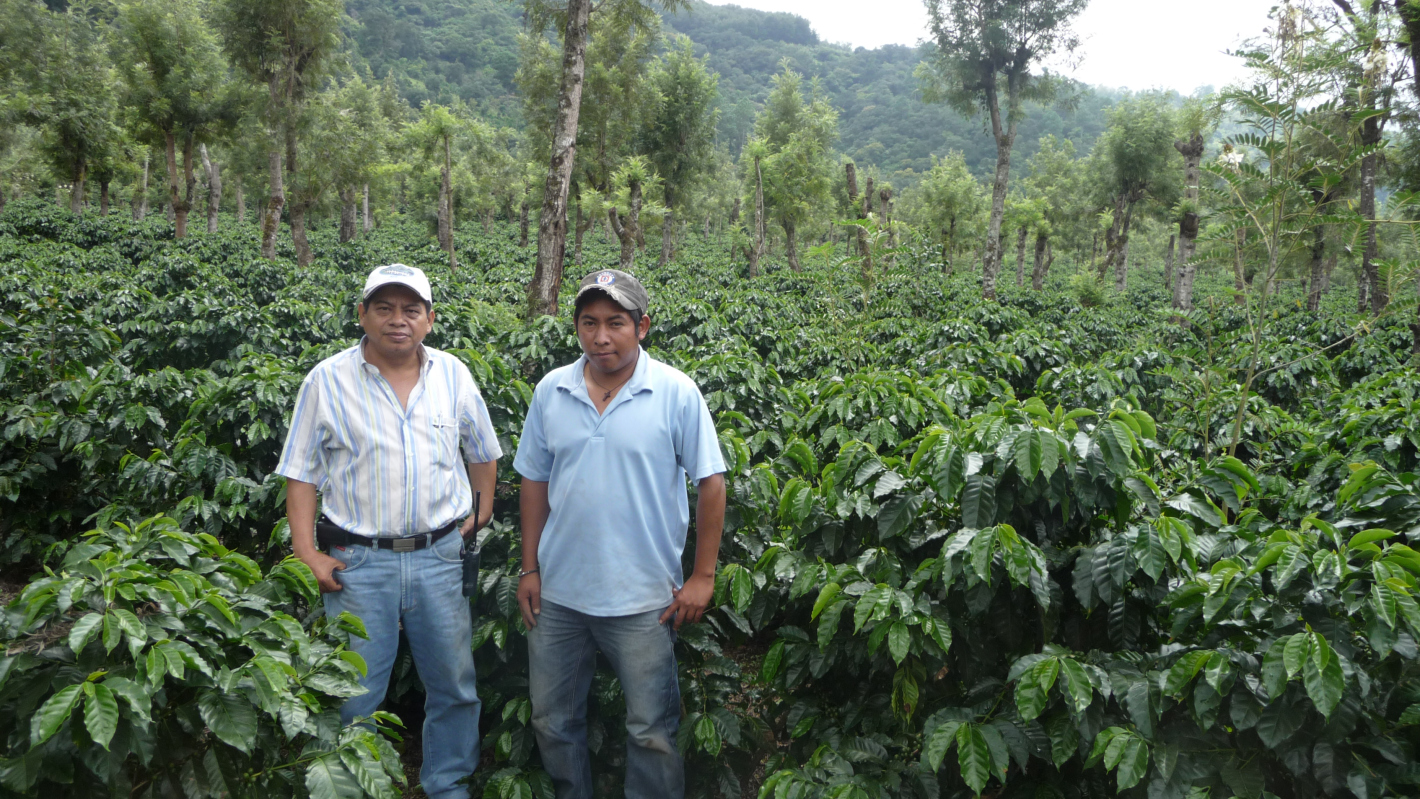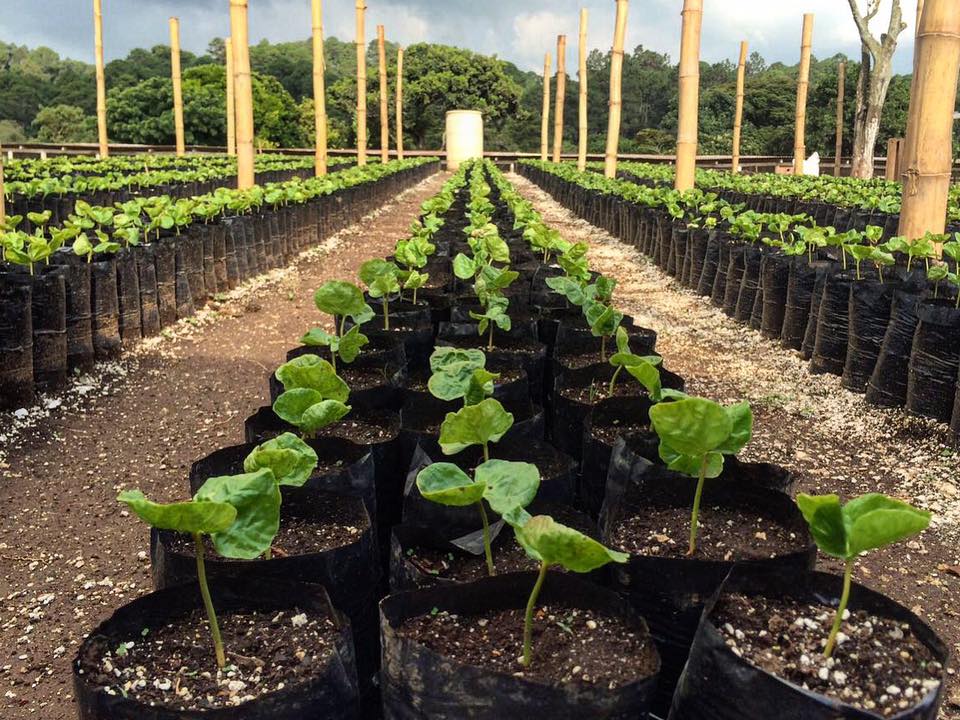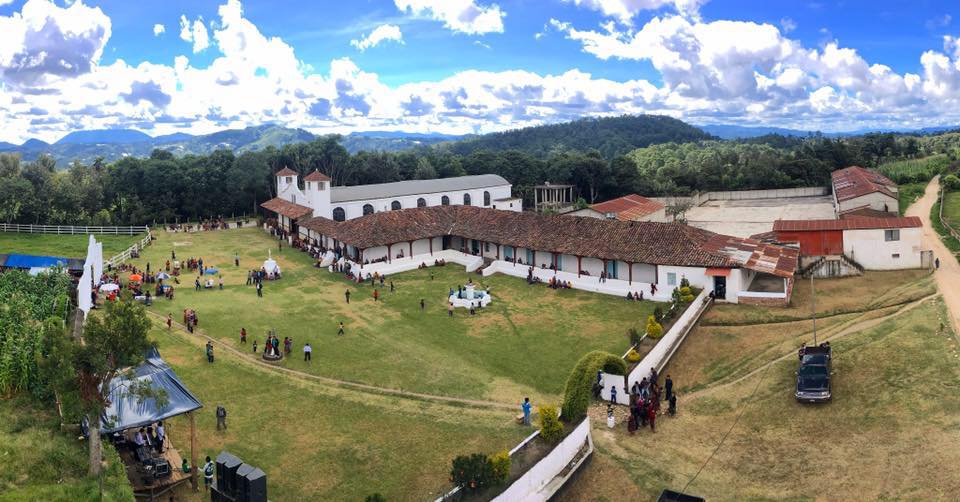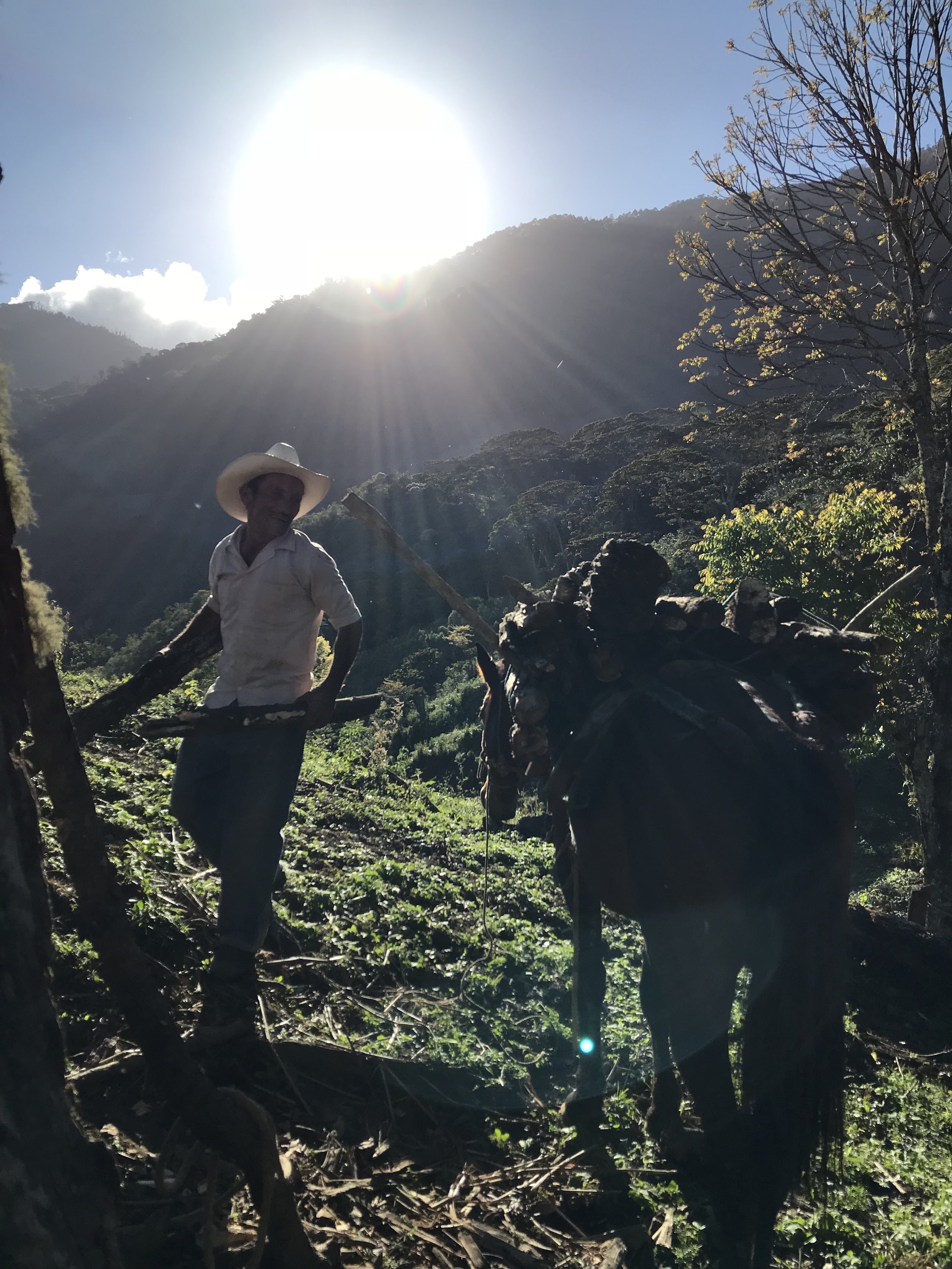CLEAN, SWEET & ELEGANT COFFEES FROM THE RIGHT PARTNER
When done right, Guatemalan coffees are amongst the most versatile. The best cups exhibit the essence of balance: prominent fruit and acidity elegantly balanced by a sweetness that ensures the fruited qualities aren't too "in your face." This balanced cup quality is no accident. While variety and terroir are always at the base of a coffee's quality, none of this potential could be realized without the vigilance of good farming, picking and processing techniques. And this is where the Zelaya family and their team at Bella Vista Mill complete the picture of the who, what, where and why of our coffees from Antigua & Huehuetenango.
Scroll down to
Learn more about the coffee market in Guatemala;
Meet our partners at origin;
Read our blog posts on Guatemala;
Download photos;
See our Guatemala offers list;
Download coffee information sheets;
See the FOB we paid for all coffees from Guatemala in 2018.
Bella Vista Mill, Antigua, Guatemala. Luis Pedro Zelaya Zamora is a fourth generation coffee producer and he and his family have been our partners since 2013. The staff at Bella Vista both run the processing facilities and manage many of the farms delivering coffee to Bella Vista.
history and market
Coffee cultivation started in Guatemala around 1850 and grew to become the country’s main export crop (80% of exports) by the end of the 19th century, due to reforms led by then-President Justo Rufino Barrios. These policies were especially brutal toward the Indigenous People, as Barrios took away their lands, along with lands occupied by the Catholic Church. These lands were used to make way for Guatemala’s first coffee plantations.
Anacafé, Guatemala’s coffee board, was established in 1960 and joined the ICO in 1963. With a rise in demand for quality coffee in the late-1980s, particularly in the United States, Anacafé began promoting regional coffees.
The dramatic fall of coffee prices at the beginning of the 1990s caused many finca owners, then making up the majority of coffee producers, to go bankrupt and abandon their coffee plantations. Those with both the means and desire to continue with coffee production began to focus more heavily on specialty coffee production, with Anacafé providing support through research, training and marketing toward specialty markets.
Today specialty buyers are working primarily with modern fincas, and an increasing number of smallholders are partnering with millers/exporters. Guatemalan coffees serve both commercial and specialty roasters well, given the strong and steady increase of knowledge, education, and professionalism found in Guatemala’s coffee sector.
OUR PARTNERS AT ORIGIN
Since 2013, CCS has been working exclusively with Bella Vista, a wet/dry mill and export company led by Luis Pedro Zelaya Zamora (LPZZ), a fourth-generation coffee producer and trained agronomist.
For many years, the Zelaya family’s business focus was on commercial coffee production and export. This changed in 2000 when LPZZ began developing and changing Bella Vista’s focus into specialty coffee and microlots, with the support of some early clients.
Over time Bella Vista has been able to successfully transition into a business solely focusing on specialty coffee. For the Zelaya family, their coffee endeavours are not only about business: their aim is always to provide a good base for the prosperity of future generations of their family and community. With this in mind, the Bella Vista team is constantly looking for ways to provide jobs to as many families in their surrounding communities as possible, along with supplying the best quality coffee they can.
In addition to processing, milling and exporting coffee, the Bella Vista team, who have considerable training in modern agronomy education, manage many of the fincas from which they buy coffee. In more recent seasons, Bella Vista have expanded further outside their Antigua home to work with smallholder families who otherwise find it challenging to process coffee and find good markets for their lots.
One such program is called Hunapu (‘mountain flower’ in the Indigenous K’iche language), a blend of coffee made up of different small producers who own small farms around Antigua (one to four hectares in size), between the altitudes of 1500 to 1800 meters above sea level. Hunapu coffee is sorted into day lots. It is programs such as these that keep us coming back to Bella Vista year-after-year.
guatemala BLOG POSTS
Use the arrows on the right to browse all Guatemala blog posts.
PHOTOGRAPHS FOR DOWNLOAD
Right click on a photo below and select “Save Image As” to download.
FOB, CCS Guatemala SELECTION, 2018
See the FOB we paid for all coffees purchased from Guatemala in 2018.
The FOB represents the price we pay our export partners at origin. To calculate the cost we charge to roasters, we add the following:
Financing and logistics, on average USD $0.3/lb
(USD $0.4/lb for inland coffees such as Burundi).
We work with financing partners as we are an independent sourcing company without the capital to finance coffee. Logistics covers shipping, insurance and other costs to transport coffee from ports at origin to our warehouses located in Oslo, Hamburg, New Jersey and Oakland. This price is only for full containers. When we ship smaller quantities of coffee, like from Panama for example, financing and logistics costs are much higher.Our markup to cover our costs.
The markup varies, depending on the FOB, volumes purchased, and the need to remain competitive in the market. For example, we take a lower margin on our most expensive coffees. On average, in 2018, our markup is 20%.
So the equation for all origins, except Burundi, looks something like this:
Price to roasters per pound = (FOB + US$0.3) x 1.2
Price to roasters per kilo = (FOB + US$0.66) x 1.2
The equation for Burundi looks something like this:
Price to roasters per pound = (FOB + US$0.4) x 1.2
Price to roasters per kilo = (FOB + US$0.88) x 1.2
Please remember, these are averages.










































